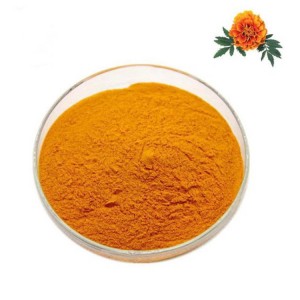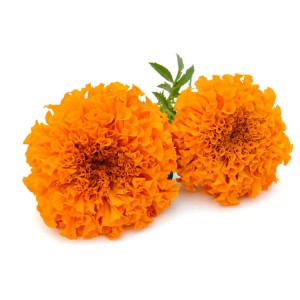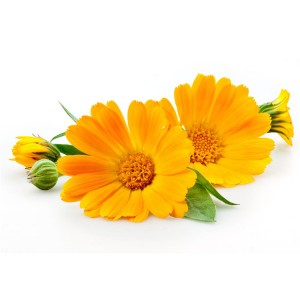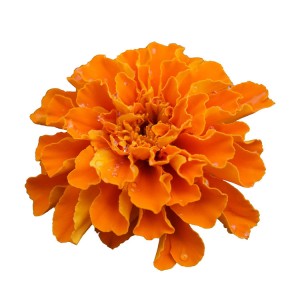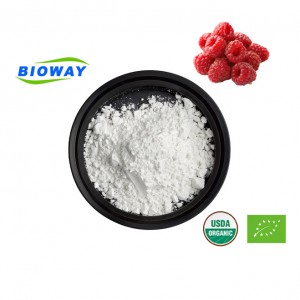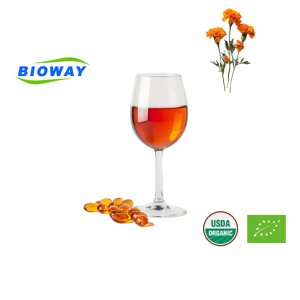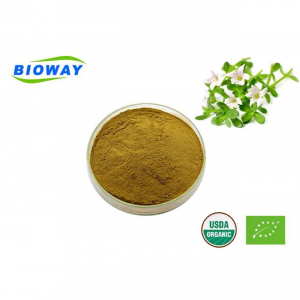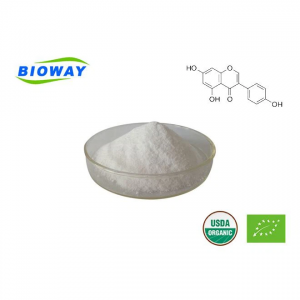Marigold Extract Yellow Pigment
Marigold extract pigment is a natural food colorant extracted from the petals of French marigold flowers (Tagetes erecta L.). The process of extracting marigold extract pigment involves crushing the petals of the flowers and then using solvents to extract the color compounds. The extract is then filtered, concentrated, and dried to create a powder form that can be used as a food coloring agent. The main feature of marigold extract pigment is its bright yellow-orange color, which makes it an ideal natural food colorant for various food products. It has a high stability and can withstand heat, light and pH changes, making it a suitable option to be used in a wide range of food applications including beverages, confectionery, dairy products, bakery, and meat products. Marigold extract pigment is also known for its health benefits due to its carotenoid content, mainly lutein and zeaxanthin. These carotenoids are known to possess antioxidant properties that are beneficial to eye health and may also reduce the risk of age-related macular degeneration.
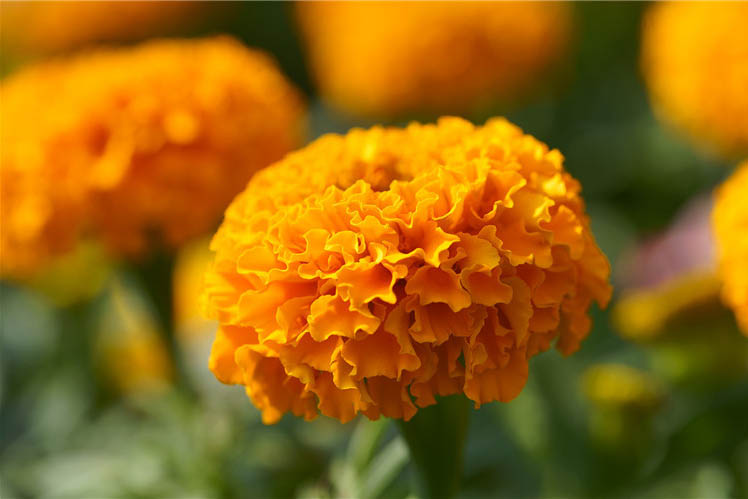
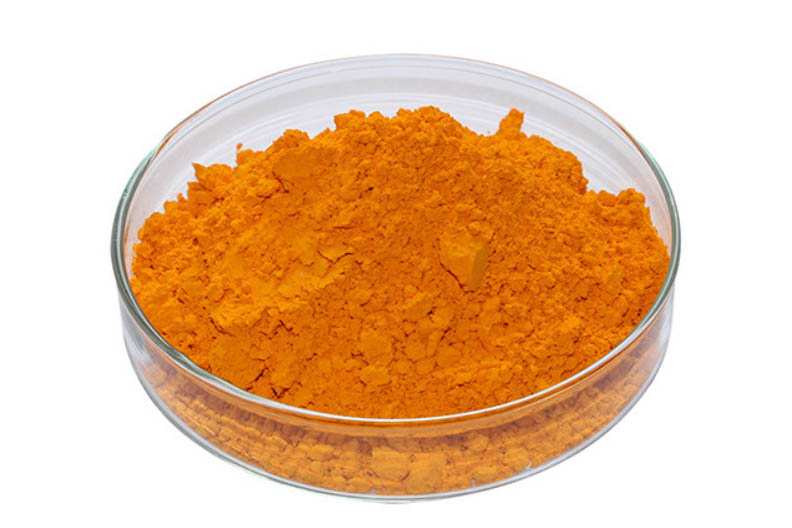
| Product | Marigold extract powder |
| Part Used | Flower |
| Place of Origin | China |
| Test Item | Specifications | Test Method |
| Character |
Orange fine powder |
Visible |
| Smell | Characteristic of original berry | Organ |
| Impurity | No visible impurity | Visible |
| Moisture | ≤5% | GB 5009.3-2016 (I) |
| Ash | ≤5% | GB 5009.4-2016 (I) |
| Total Heavy Metals | ≤10ppm | GB/T 5009.12-2013 |
| Lead | ≤2ppm | GB/T 5009.12-2017 |
| Arsenic | ≤2ppm | GB/T 5009.11-2014 |
| Mercury | ≤1ppm | GB/T 5009.17-2014 |
| Cadmium | ≤1ppm | GB/T 5009.15-2014 |
| Total Plate Count | ≤1000CFU/g | GB 4789.2-2016 (I) |
| Yeast & Molds | ≤100CFU/g | GB 4789.15-2016(I) |
| E. Coli | Negative | GB 4789.38-2012 (II) |
| Storage | Store in a well-closed container Away from moisture | |
| Allergen | Free | |
| Package |
Specification:25kg/bag Inner packing: Food grade two PE plastic-bags Outer packing: paper-drums |
|
| Shelf Life | 2years | |
| Reference |
(EC) No 396/2005 (EC) No1441 2007 (EC)No 1881/2006 (EC)No396/2005 Food Chemicals Codex (FCC8) (EC)No834/2007 (NOP)7CFR Part 205 |
|
| Prepared by: Ms Ma | Approved by: Mr Cheng | |
Marigold extract yellow pigment is a natural and high-quality food colorant that offers several selling features, such as:
1. Natural: Marigold extract yellow pigment is derived from the petals of the marigold flower. It is a natural alternative to synthetic colorants, making it a safer and healthier option for food manufacturers.
2. Stable: Marigold extract yellow pigment is stable under various processing conditions, including heat, light, pH, and oxidation. This stability ensures the color remains intact throughout the product's shelf life.
3. High color intensity: Marigold extract yellow pigment offers high color intensity, allowing food manufacturers to use smaller amounts of pigment to achieve the desired color. This efficiency can help reduce costs while still meeting the desired color specifications.
4. Health benefits: Marigold extract yellow pigment contains lutein and zeaxanthin, which are potent antioxidants that can help promote eye health. These health benefits add an additional selling point for products that use marigold extract yellow pigment.
5. Regulatory compliance: Marigold extract yellow pigment is approved by regulatory bodies such as the US Food and Drug Administration (FDA) and the European Food Safety Authority (EFSA) for use in food applications.
6. Versatile: Marigold extract yellow pigment can be used in a wide range of food applications, including beverages, confectionery, dairy products, bakery, meat products, and pet food. This versatility increases the market potential for products that use marigold extract yellow pigment.
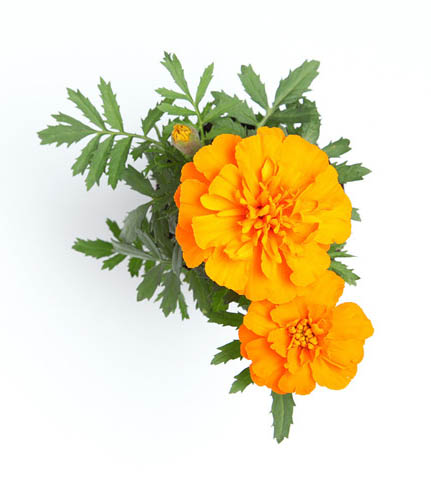
Marigold extract yellow pigment has a wide range of applications in the food industry. Here are some of the product applications:
1. Beverages: Marigold extract yellow pigment can be used in the formulation of various beverages such as carbonated drinks, energy drinks, fruit juices, and sports drinks to give them an appealing yellow-orange color.
2. Confectionery: Marigold extract yellow pigment is a popular choice in the confectionery industry for its bright yellow color. It can be used in the production of candy, chocolates, and other sweet treats.
3. Dairy products: Marigold extract yellow pigment can be used in the formulation of dairy products such as cheese, yogurt, and ice cream to give them an attractive yellow color.
4. Bakery: Marigold extract yellow pigment is also used in the bakery industry to color bread, cakes, and other bakery products.
5. Meat products: Marigold extract yellow pigment is an alternative to synthetic colorants used in the meat industry. It is commonly used in sausages and other meat products to give them an appealing yellow color.
6. Pet food: Marigold extract yellow pigment can also be used in the formulation of pet food to provide an attractive color.
Marigold extract yellow pigment is produced from the petals of the marigold flower (Tagetes erecta). The manufacturing process commonly involves the following steps:
1. Harvesting: The marigold flowers are harvested either manually or using mechanical methods. The flowers are usually collected during the early morning or late evening when the lutein and zeaxanthin content is the highest.
2. Drying: The harvested flowers are dried to reduce the moisture content to 10-12%. Various drying methods, such as sun drying, air drying, or oven drying, can be used.
3. Extraction: The dried flowers are then ground into a powder, and the pigment is extracted using a solvent such as ethanol or hexane. The extract is then filtered to remove impurities and concentrated through evaporation.
4. Purification: The crude extract is then purified using techniques such as chromatography or membrane filtration to separate the desired pigment (lutein and zeaxanthin) from other compounds.
5. Spray Drying: The purified extract is then spray-dried to produce a powder that contains high levels of lutein and zeaxanthin.
The resulting Marigold extract yellow pigment powder can then be added as an ingredient to food products to provide color, flavor, and potential health benefits. The quality of the pigment powder is important to ensure a consistent color, flavor, and nutrient content across multiple batches.
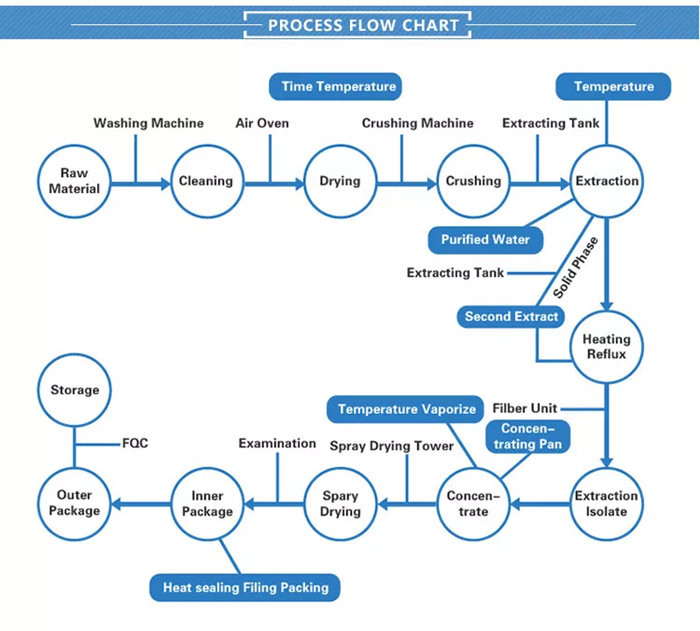
Storage: Keep in a cool, dry, and clean place, Protect from moisture and direct light.
Bulk Package: 25kg/drum.
Lead Time: 7 days after your order.
Shelf Life: 2 years.
Remark: Customized specifications also can be achieved.

Express
Under 100kg, 3-5Days
Door to door service easy to pick up the goods
By Sea
Over300kg, Around 30 Days
Port to port service professional clearance broker needed
By Air
100kg-1000kg, 5-7Days
Airport to airport service professional clearance broker needed

Marigold extract yellow pigment is certified by ISO2200, HALAL, KOSHER and HACCP certificates.

The pigment responsible for the bright yellow color in marigold petals is primarily due to the presence of two carotenoids, lutein, and zeaxanthin. These carotenoids are naturally occurring pigments that are responsible for the yellow and orange colors of many fruits and vegetables. In marigold petals, lutein and zeaxanthin are present in high concentrations, giving the petals their characteristic bright yellow color. These pigments not only provide color but also have antioxidant properties and are beneficial to human health.
The pigments responsible for the bright orange and yellow colors in marigolds are called carotenoids. Marigolds contain several types of carotenoids, including lutein, zeaxanthin, lycopene, beta-carotene, and alpha-carotene. Lutein and zeaxanthin are the most abundant carotenoids found in marigolds, and are primarily responsible for the yellow color of the flowers. These carotenoids have antioxidant properties and are thought to have other health benefits, such as supporting eye health and reducing the risk of certain diseases.








